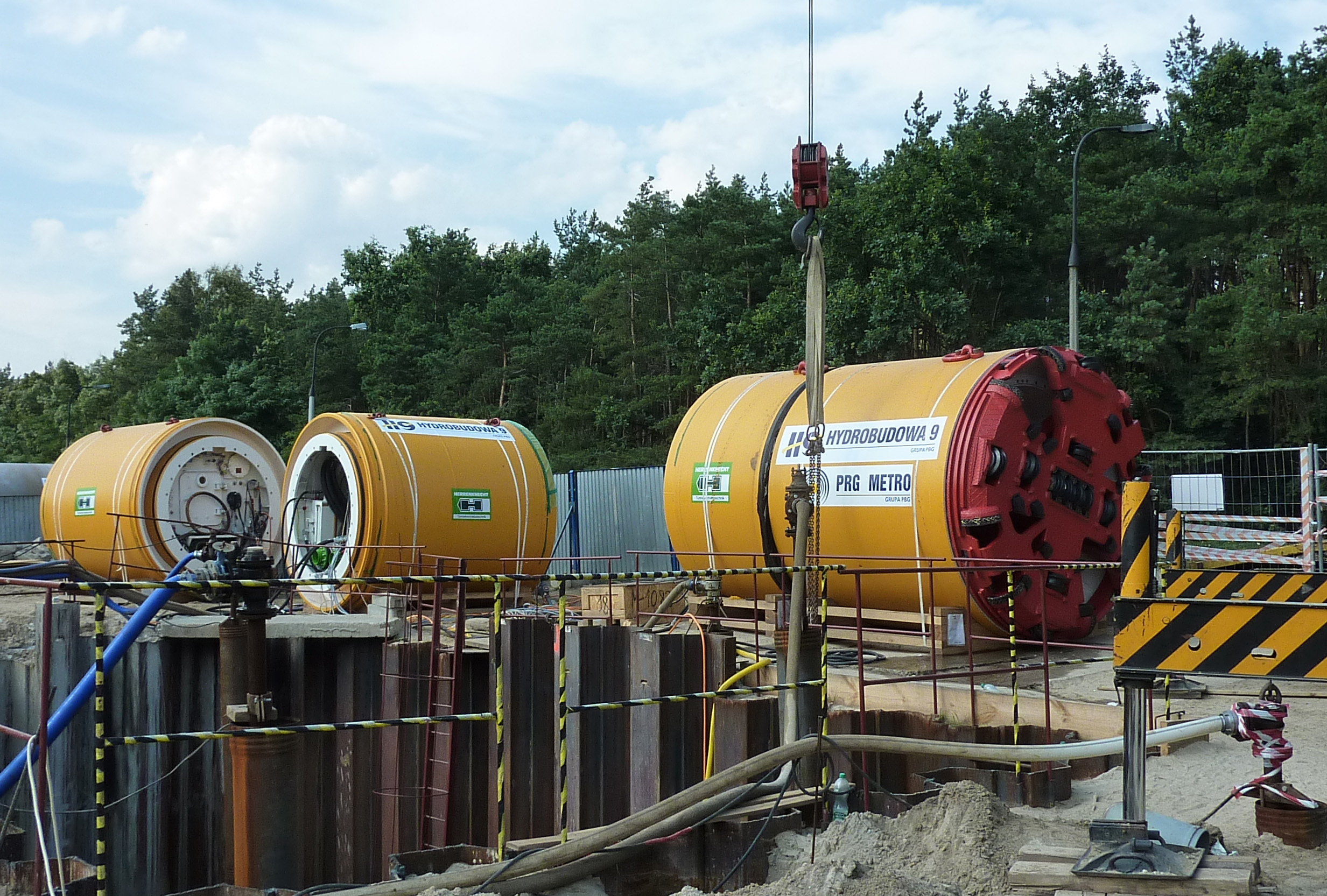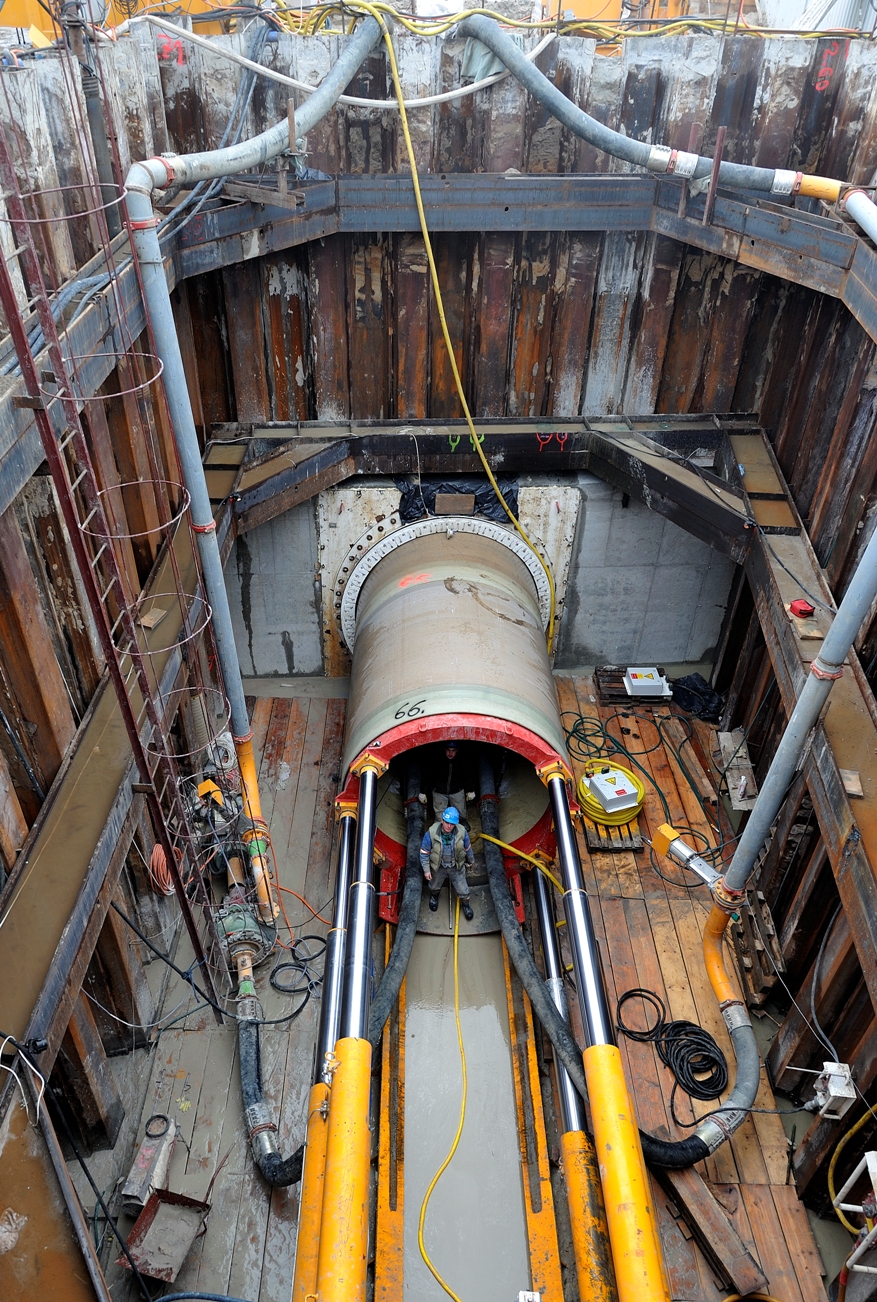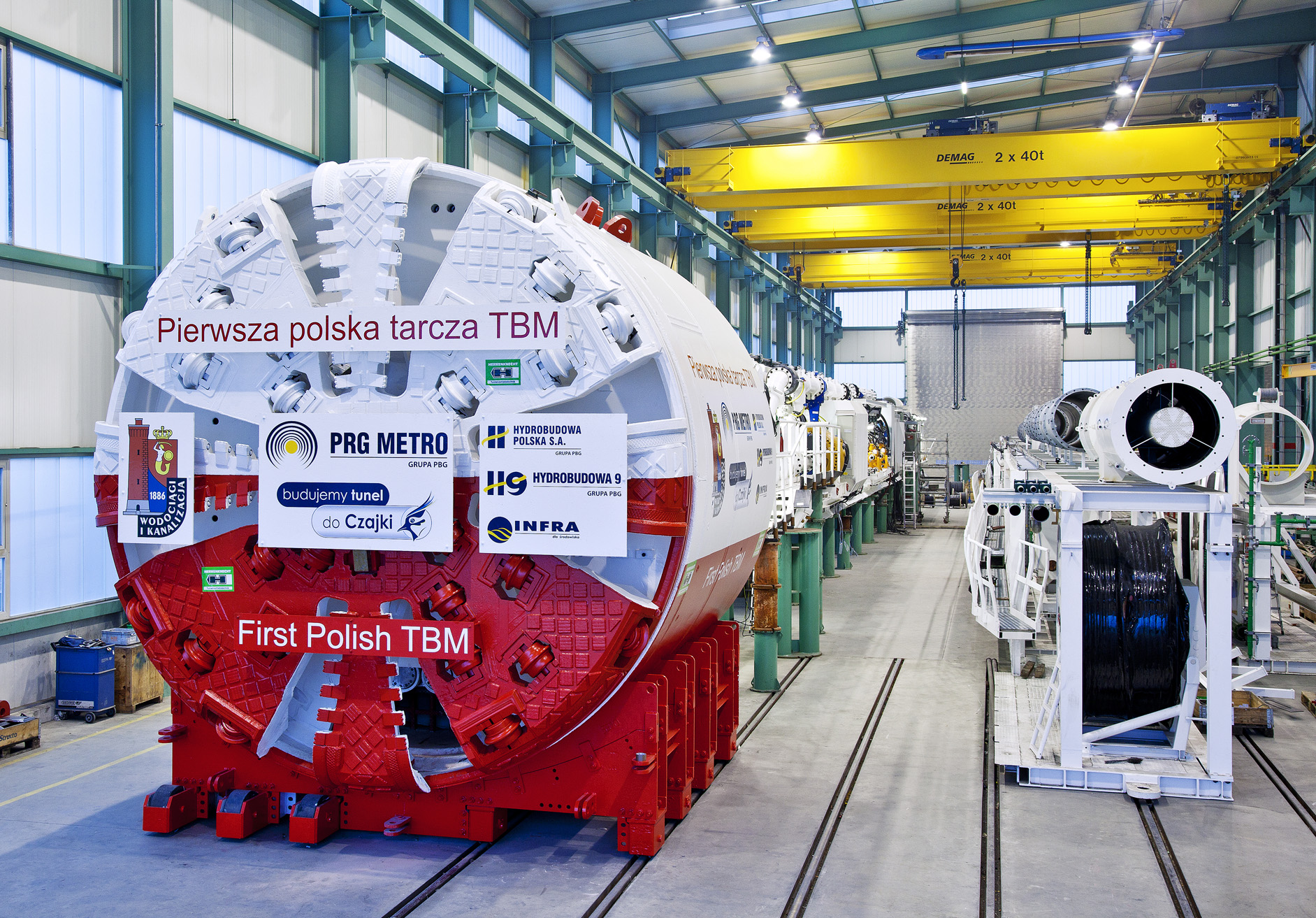Clean water for the Vistula river.
Apr 11, 2011
Construction site, general
Herrenknecht successfully completes major pipe jacking process in Warsaw.
Wastewater systems in many large cities have already reached their limits requiring modernization or expansion in order to avoid overflowing into nearby rivers. For this reason, the city of Warsaw is investing in the construction of a state-of-the-art wastewater treatment system. This will treat the wastewater produced by 80 percent of Warsaw's inhabitants, thereby improving the quality of water and life along the banks of the Vistula over the long term. Hydrobudowa 9 S.A., PRG Metro Sp.z.o.o. and KWG (PBG Group) have been commissioned to connect the plant with the underground wastewater network.

Apart from the unusually large diameter of 3 meters for the pipe jacking method, another challenge was represented by a high groundwater level which in some places reached up to 8 meters above the top of the pipes. The site teams were therefore obliged to dewater and seal the requisite construction shafts prior to tunnelling. The Herrenknecht AVND pipe jacking machines proved its worth during this tunnelling process. Where required, these machines secure the tunnel face using a support fluid (bentonite and water mixture) and an additional compressed air cushion in the split excavation chamber, allowing safe tunnelling under water pressure. The separation of solids of the excavated material from fluids was realized with the Herrenknecht Separation Plant HSP500, providing a capacity of 400 to 500 m³/h depending on the particle size distribution.


Project data
Wastewater tunnel in Warsaw, Poland
Geology: 70% coarse and fine sand, 30% clay and loam, gravel, boulders
Tunnel lengths: total of 5,860 m, 16 drives of 80 to 930 meters
Particular features: high groundwater level, long-distance driving, curve drives
Machine data
Herrenknecht M-1083M, AVND2000AB with Extension Kit, excavation diameter 3,025mm
Herrenknecht M-1363M, AVND2400AB, excavation diameter 3,025mm
Cutterhead: mixed-soil cutterheads fitted with disc cutters and cutting knives
Max. torque: 780kNm, 1,200kNm
Tunnel lining: Pipe Jacking
More News and Articles
Aug 07, 2025
News
Kanalgipfel 2025: Netzweite operative Bedarfsplanung mittels individuellem Sanierungskosten- und Entscheidungsmodell
Die Entwässerungssysteme unserer Städte sind ein wesentlicher Bestandteil des kommunalen Anlagevermögens. Die große Zukunftsaufgabe, …
May 26, 2025
News
Kanalgipfel 2025: Smart Processing – mit KI-Technologien von der Kanalinspektion bis zur Sanierungsstrategie
Die Entwässerungssysteme unserer Städte sind ein wesentlicher Bestandteil des kommunalen Anlagevermögens. Die große Zukunftsaufgabe, …
May 12, 2025
News
Kanalgipfel 2025: Stand der Kanalsanierung in Deutschland – Eine kritische Betrachtung
Die Entwässerungssysteme unserer Städte sind ein wesentlicher Bestandteil des kommunalen Anlagevermögens. Die große Zukunftsaufgabe, vor der viele Kommunen …
Aug 28, 2024
News
ITpipes Secures $20M to Transform Water Infrastructure Management
ITpipes announced it has secured $20 million in equity financing from Trilogy Search Partners and Miramar Equity Partners.
Known for its trusted and user-friendly platform, ITpipes …
Aug 26, 2024
News
Professor Dr.-Ing. Dietrich Stein
With deep sadness we announce the loss of our founder and partner Prof Dr Dietrich Stein at the age of 85.
Engineers around the globe are thankful for his dedication to the inventions in the fields of sewers, …
Aug 26, 2024
News
PPI Releases New Installation Guide for PE4710 Pipe
PPI’s MAB-11-2024 Covers HDPE Water Pipelines Up to 60-in. Diameter and 10,000-ft Long Pulls
Developed by the Municipal Advisory Board (MAB) – and published with the help of the members of the …
Aug 23, 2024
News
Faster wide-scale leak detection now within reach
Mass deployment of connected leak loggers is being made possible by the latest technology, writes Tony Gwynne, global leakage solutions director, Ovarro
Water companies in England and Wales are …
Aug 21, 2024
News
Kraken awakens customer service potential in water
The innovative customer service platform Kraken has made a successful transfer from energy to water. Ahead of their presentation at UKWIR’s annual conference, Portsmouth Water chief executive …
Aug 19, 2024
News
Predicting the toxicity of chemicals with AI
Researchers at Eawag and the Swiss Data Science Center have trained AI algorithms with a comprehensive ecotoxicological dataset. Now their machine learning models can predict how toxic chemicals are …
Aug 16, 2024
News
Goodbye water loss: Trenchless pipe renewal in Brazil
Pipe renewal in Brazil
How do you stop water loss through leaks in old pipe systems without major environmental impacts and restrictions? The answer: with trenchless technology, or more precisely …
Aug 14, 2024
Article
Impact of high-temperature heat storage on groundwater
In a recently launched project, the aquatic research institute Eawag is investigating how the use of borehole thermal energy storage (BTES) affects the surrounding soil, the groundwater …
Aug 12, 2024
News
Watercare completes East Coast Bays sewer link
Watercare has successfully finished the final connection on the East Coast Bays link sewer at Windsor Park in New Zealand.
Much of the East Coast Bays sewer link was installed using horizontal directional …
Contact
Herrenknecht AG
77963 Schwanau
Phone:
+49 (0) 7824-302-0
Fax:
+49 (0) 7824-34-03


